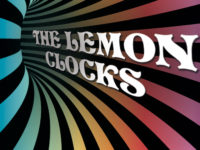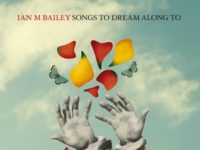As a brief historical reminder, the term “Paisley Underground” refers to an early-1980s movement centered in southern California that accommodated a wide variety of musical styles, but often emphasized strong vocal melodies and harmonies, psychedelic guitar weirdness and garage band energy of the ’60s.
As one can imagine, it was in some ways simultaneously out of time and of its time. And, like many genres and subgenres of pop, the popularity of the Paisley Underground movement came and went, with only the Bangles making the jump to mainstream recognition and success.
But, as the old song goes, “Hey hey, my my/ Rock and roll can never die,” and 35-odd years later, the Bangles have joined with their spiritual siblings in the Three O’Clock, the Dream Syndicate, and Rain Parade to release a unique project: 3 X 4, which is an album where the four bands each cover songs originally written and performed by the other three artists.
First of all, this album should appeal to any fan of 1960s-based music – that’s a given. But for those who are familiar with these bands and their respective catalogues, 3 X 4 is a bit of a revelation.
It’s usually acknowledged that each group had their own unique sound: the Bangles were known for layering rich harmonies over a bed of jangly folk rock; the Dream Syndicate often dealt in dark, feedback drenched drone; the Three O’Clock represented energetic garage pop; and Rain Parade combined introspective lyrics and psychedelic musical landscapes.
But when it comes to covering each other’s material on Yep Roc Records’ 3 x 4, the overlap turns out to be much closer than one might think.
For example, the Bangles’ version of the Dream Syndicate’s classic “That’s What You Always Say” wouldn’t have sounded out of place in a Bangles’ set list back in their early days, and furthermore, shows what a kick-ass rock and roll band the Bangles always were, despite becoming fixtures on MTV only a few years later. And Rain Parade’s version of the Three O’Clock’s “As Real As Real” shows that the song was just a reverb chamber away from its own psychedelic journey.
There are many other examples of this sort of musical cross-pollination for those who care to listen, but perhaps it’s the overall package that matters most: one can really hear the spirit of camaraderie that existed and still exists between these bands. Ultimately, you won’t need to dig out your rose-colored glasses from your memorabilia box to enjoy 3 X 4, because it still sounds timeless.
- How David Bowie’s ‘The Next Day’ Stripped Away All of the Artifice - March 15, 2023
- Why Deep Purple’s ‘Who Do We Think We Are?’ Deserves Another Listen - January 11, 2023
- In Defense of the Often-Overlooked Mott the Hoople - November 10, 2022




